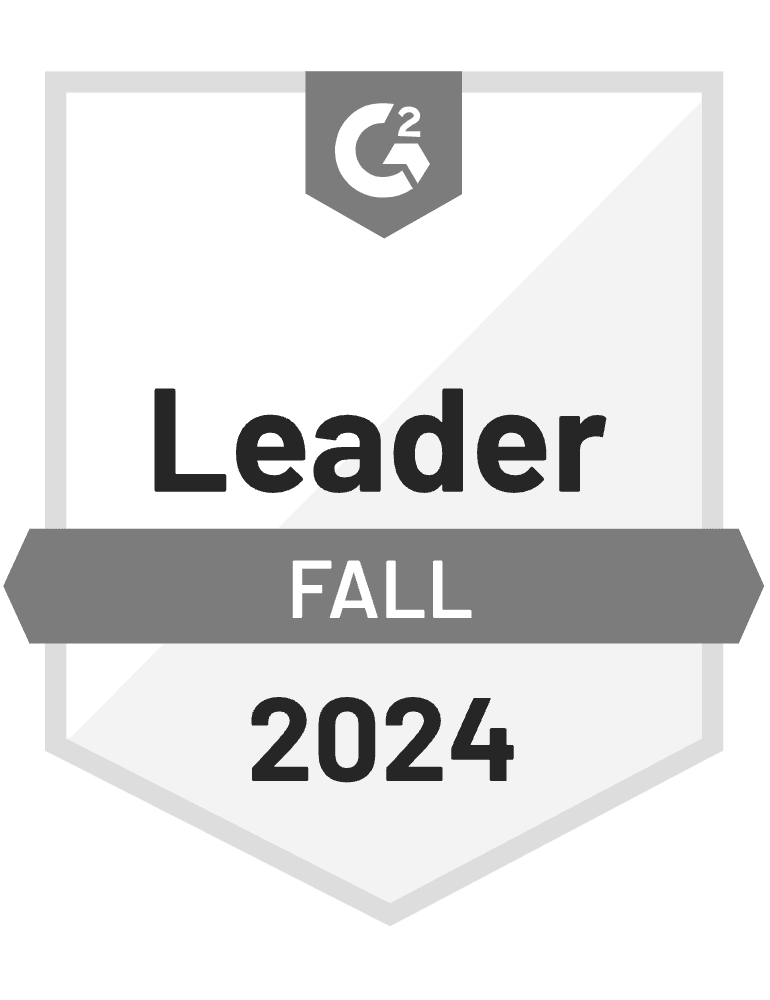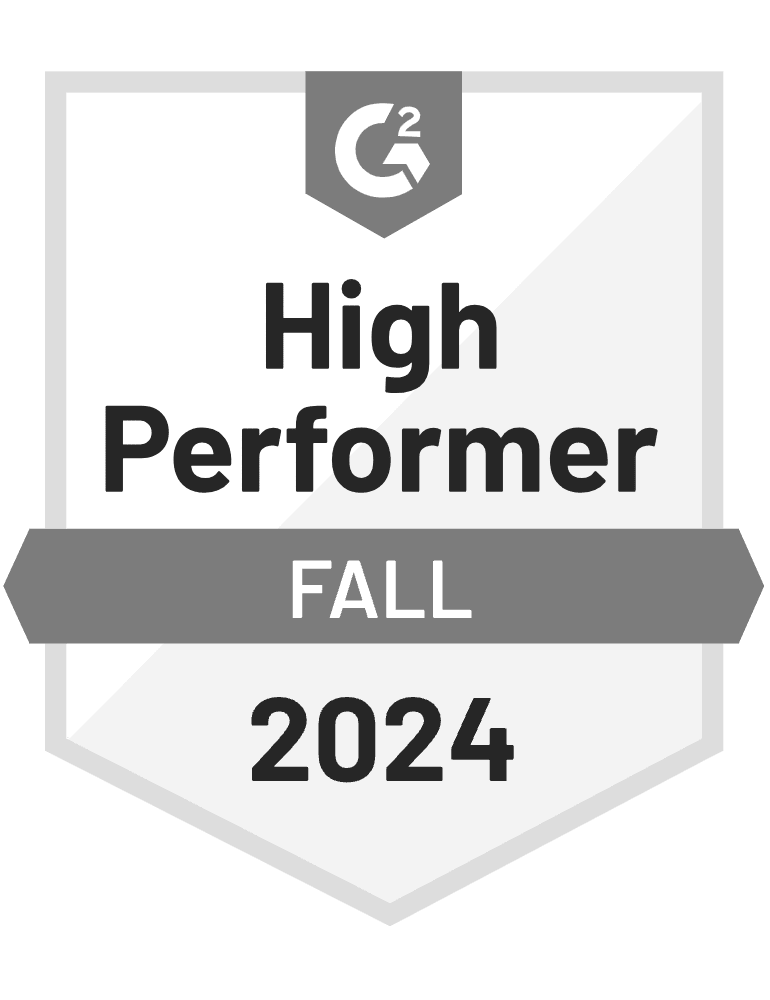- Blog
- The Ultimate Guide to Ecommerce Retargeting
The Ultimate Guide to Ecommerce Retargeting
-
Barbara Bartucz
- Ecommerce
- 6 min read
Table of Contents
Ever feel like your online store is a revolving door? People come in, browse a bit, maybe even add something to their cart… and then vanish like a ghost.
If you’re tired of watching potential customers slip through the cracks, ecommerce retargeting might just be your new best friend. It’s a digital marketing strategy designed to bring back those almost-buyers and turn missed opportunities into real sales.
Let’s break it all down—what ecommerce retargeting is, how it works, and how you can use it to increase your conversion rates and ROI.
What is ecommerce retargeting?
Ecommerce retargeting is the practice of reaching out to website visitors who’ve already interacted with your store—browsed products, added items to their cart, maybe even reached the checkout page—but didn’t follow through with a purchase.
Using third-party cookies or tracking pixels, these users are shown targeted ads on platforms like Facebook, Instagram, Google, and TikTok. The idea is to gently remind your target audience, “Hey, you were interested in this—still are?”
Triggered by specific actions like cart abandonment or product views, retargeting campaigns aim to bring warm leads back into the funnel and nudge them toward checkout.
How do retargeting campaigns work?
To use retargeting ads effectively, you need to understand the core methods crucial for effective retargeting strategies.
1. Pixel-based retargeting
This is the most common form of retargeting—and it’s highly effective. It involves placing a small piece of code (a pixel) on your website. When a visitor lands on your site, the pixel tracks their activity: what pages they visited, which products they viewed, whether they added items to the cart, and so on.
That data is then shared with platforms like Meta (Facebook/Instagram), Google, or TikTok, which use it to serve personalized ads to that user as they browse other parts of the internet or scroll through social media.
Why it works: These ads feel timely and relevant because they reflect what the user was already interested in. Instead of blasting out a generic ad, you’re giving them a subtle reminder about something they already considered buying.
2. List-based retargeting
List-based retargeting is all about re-engaging people who are already in your system—like your email subscribers, past customers, or leads from previous campaigns. You upload a customer email list to platforms like Facebook or LinkedIn, and those platforms match the emails to user profiles.
From there, you can target them with ads tailored to their history with your brand—maybe promoting a new collection, exclusive offer, or loyalty discount.
Why it works: It lets you create highly personalized, segmented ad campaigns for users who are already familiar with your business. This makes your message more relevant and your audience more likely to convert.
5 types of ecommerce retargeting
Each type of ecommerce retargeting ad plays a specific role in guiding customers through their buying journey. Let’s explore how you can use each effectively.
1. Standard retargeting
This is your go-to, no-frills format. Standard retargeting ads show generic brand or product messages to users who visited your site but didn’t take action.
Take Harry’s, for example. They use a straightforward retargeting ad targeting visitors who browsed their site but didn’t sign up for a trial.

When to use it: It’s ideal for building brand awareness or reminding users that your store exists—but since it’s not personalized, it’s usually less effective at driving conversions compared to dynamic approaches.
2. Dynamic retargeting
Dynamic retargeting is the real game-changer. These ads automatically showcase the exact products a visitor viewed, added to their cart, or nearly purchased.
Here’s a great example from Bannerwise, showing how you can retarget individual users with highly specific and personalized ads.
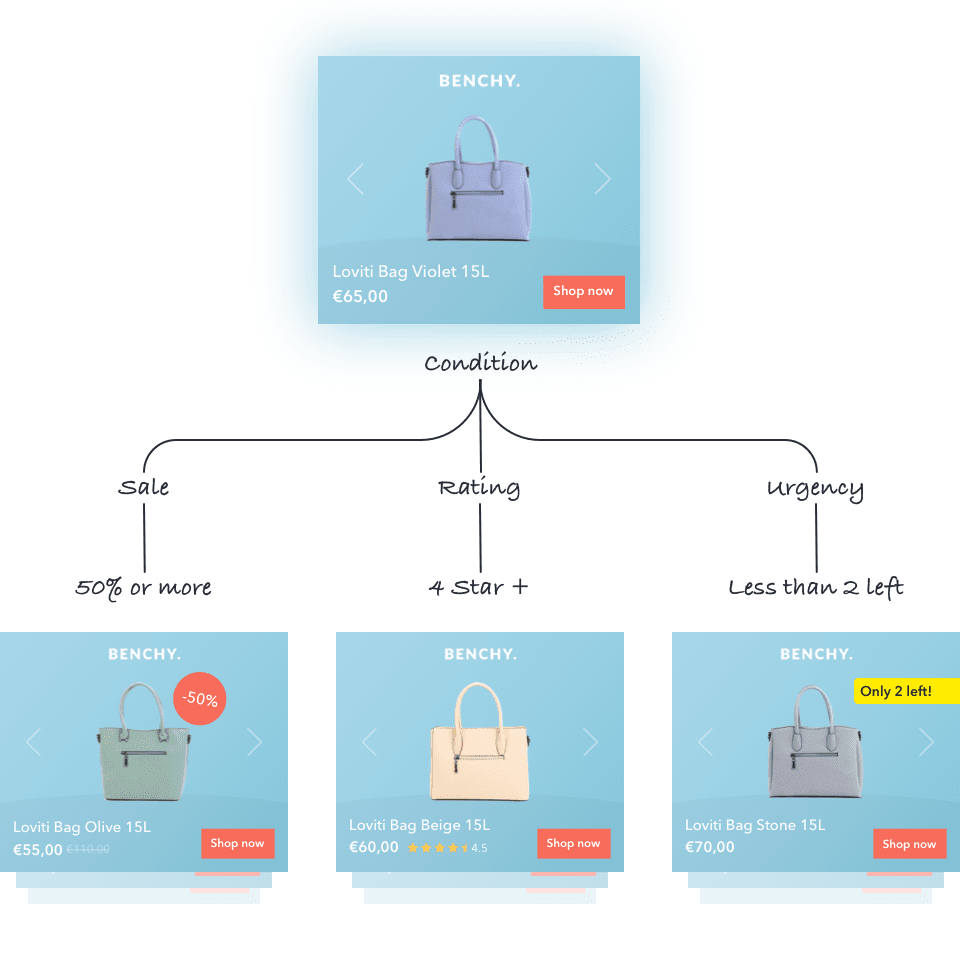
Image source: Bannerwise
Why it works: It’s specific and personal. Instead of showing a random product, you’re serving a tailored reminder: “Still thinking about this?” That relevance increases click-through and conversion rates significantly.
3. Email retargeting
Email retargeting targets users who’ve taken some action—like signing up for your newsletter or starting checkout—but didn’t complete a purchase. You follow up via email with personalized product suggestions, cart reminders, or limited-time deals.
Example: If a customer browses your site and leaves without buying, you can email them with “Still thinking it over?” and offer free shipping or a discount.
Take a cue from AuraPets and how they included visuals and great copy at the same time.

4. Social media retargeting
Social platforms like Facebook, Instagram, and Pinterest are perfect environments for retargeting. Why? Because users are relaxed and already in browsing mode.
These ads are especially effective because you can use rich visuals and video content to remind users of what they almost bought—right in the middle of their feed.
Take Bambu Earth, for example. They’ve used a mix of customer reviews, straightforward retargeting ads, and product showcases to reel customers back in.
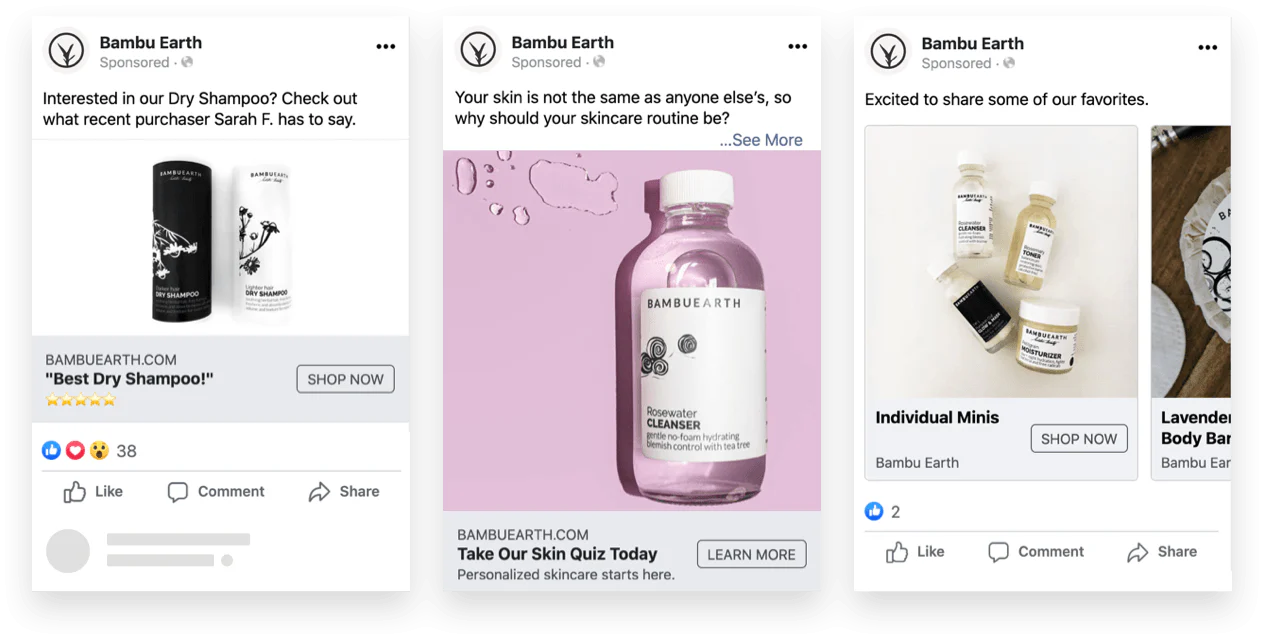
Image source: Common Thread Collective
Bonus: Social platforms allow you to layer in audience segmentation and ad sequencing for even better results.
5. Onsite retargeting
Onsite retargeting lets you reconnect with visitors while they’re still on your site, giving you a prime opportunity to turn them into leads or customers.
By showing them the products they last viewed, you make it easy for them to pick up right where they left off.
With just one click, they can continue browsing the same products, or they can close the message if they’re no longer interested.
Here is how Parfume Lab did it:

Wanna create something similar? Get started with these templates:
How to create an ecommerce retargeting strategy
Ready to start? Here’s how to build a strategy that will help you create retargeting ads that actually work.
1. Install a retargeting pixel
Start by adding a tracking pixel from your ad platform—Google Ads, Meta (Facebook/Instagram), TikTok, etc.—to your website. This small snippet of code tracks what visitors do on your site: which products they view, how far they make it in the checkout process, and whether they bounce.
Why it matters?
Without a pixel, there’s no data. And without data, there’s no retargeting. It’s the foundation of everything.
2. Define your retargeting goals
Before creating ads, get clear on your objective. Are you:
- Trying to recover abandoned carts?
- Re-engaging newsletter subscribers?
- Encouraging repeat purchases?
Each goal requires a different audience segment, creative approach, and call to action. Without a goal, your ads won’t have direction—or results.
3. Get creative with your ads
Once your pixel is collecting data and your goal is defined, it’s time to build ads that hit home. Use eye-catching visuals, direct headlines, and messaging that speaks to the user’s position in the buying journey.
For instance, if you’re targeting cart abandoners, try something like, “Still thinking it over? Here’s 10% off to help you decide.” Or, as Trendy Fashion did, you could offer a tempting free shipping deal to seal the deal.
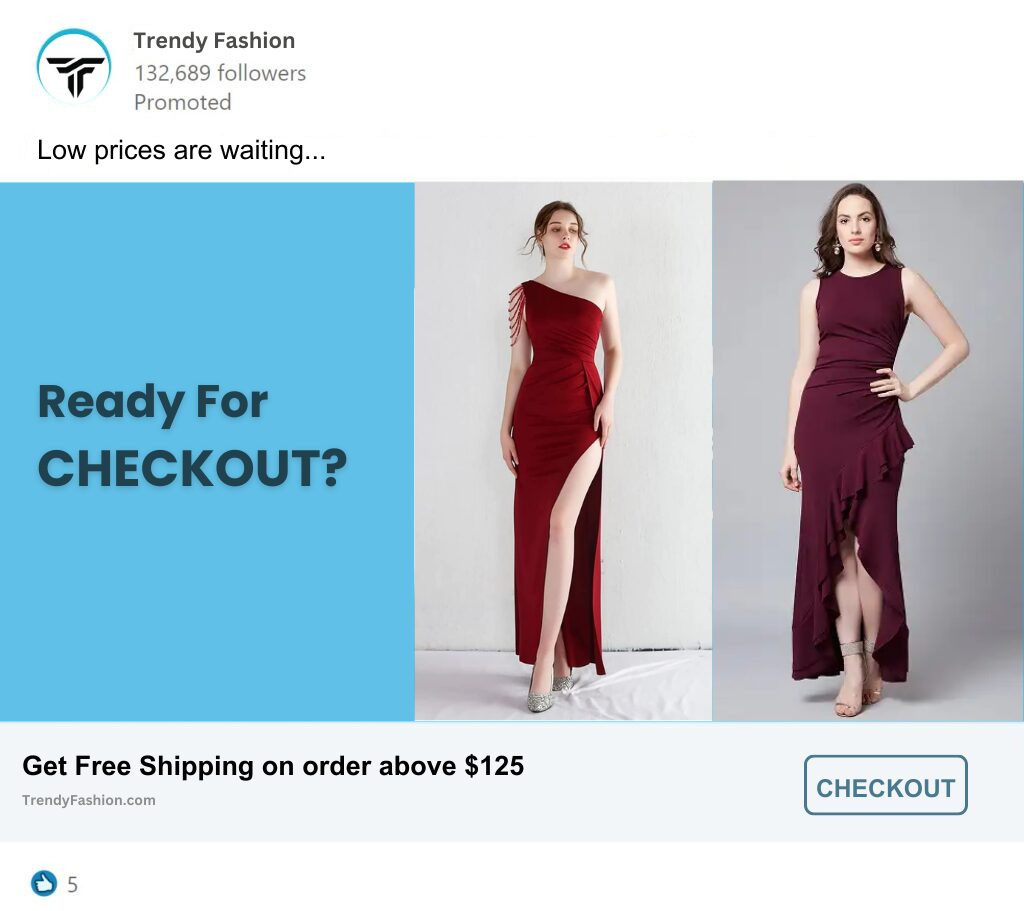
For a returning customer, try something like, “Loved your last order? You’ll probably love these too.” Ensure that every aspect of the ad aligns with the action you want the user to take, from the visuals to the call-to-action.
3 proven remarketing strategies that actually work
These are the tactics top ecommerce brands use, including the strategic implementation of a retargeting ad, to re-engage visitors and recover revenue.
1. Segment shoppers by behavior
Not all site visitors are the same. Someone who viewed a homepage once is less valuable than someone who added three products to their cart.
Break your audience into behavior-based segments:
- Browsers (viewed a product page)
- Cart abandoners
- Checkout abandoners
- Past purchasers
This lets you send tailored messages that are much more likely to resonate.
2. Personalize your ads
The more relevant the ad, the higher the chance of conversion. Use dynamic content to show the exact items a user interacted with, and pair that with personalized incentives—like free shipping or an exclusive discount.
A generic “Come back soon” won’t cut it. A personalized “Still want those sneakers? Get 10% off today only” will.
3. Use data to identify drop-off points
Use analytics tools like Google Analytics or Hotjar to find where users abandon the journey. Are they leaving at shipping? Hesitating at payment?
Once you’ve identified friction points, address them in your retargeting:
- “Worried about delivery? Here’s free shipping on your order.”
- “Not sure about sizing? Read what our customers say.”
Remove obstacles and reduce hesitation.
4. Show smart product recommendations
Leverage past behavior to show users items they’re likely to love. If someone browsed running shoes, show them socks or fitness gear. If they bought skincare, recommend a follow-up routine.
Cross-selling and upselling through retargeting isn’t just good for engagement—it boosts average order value.
4 best practices for creating retargeting ads
Good strategy is half the game. The other half? Execution. These best practices ensure your ads hit the right note—and bring shoppers back.
1. Target product page visitors
Users who viewed specific product pages have already shown serious interest. They’re low-hanging fruit. Retarget them within 24–72 hours to keep the momentum going while the intent is still hot.
2. Use dynamic product ads
Don’t make people hunt for what they liked—show them exactly what they saw. Dynamic product ads automatically populate with the items a user interacted with. These ads feel like helpful reminders, not interruptions.
That relevance drives better engagement and higher conversion rates.
3. Run sequential retargeting ads
One ad isn’t always enough. Guide users through a journey with sequential ads:
- Ad 1: Product reminder
- Ad 2: Social proof (reviews, testimonials)
- Ad 3: Offer or incentive (discount, bonus)
This layered approach builds trust, overcomes objections, and moves people toward a purchase.
4. Create time-sensitive offers
Urgency is a powerful motivator. Give shoppers a reason to act now with limited-time discounts, countdown timers, or “only X left in stock” messages.
Example:
“Complete your order in the next 2 hours to get 15% off + free shipping!”
It taps into FOMO and helps hesitant buyers finally click “Buy Now.”
FAQ
What role does email retargeting play in an ecommerce marketing strategy?
Email retargeting helps bridge the gap between a site visit and a sale. It’s crucial for nurturing leads, reminding shoppers about what they left behind, and offering a second chance to buy—with personalized touchpoints that drive results.
How can ecommerce businesses maximize retargeting?
Ecommerce retargeting campaigns include various retargeting strategies like behavior-based segmentation, dynamic product ads, and consistent testing. The more relevant and timely your messaging, the more likely you are to win the sale.
Is retargeting better than regular email marketing?
It’s not about choosing one over the other—they complement each other. Retargeting ads capture on-the-go shoppers, while email keeps the conversation going. Use both for maximum impact.
What’s the difference between retargeting and remarketing?
Great question—they’re often used interchangeably, but there is a subtle difference. Retargeting typically refers to using paid ads to re-engage users who visited your site without converting. Remarketing campaigns, on the other hand, usually involve email-based outreach, like following up with someone who abandoned their cart.
Think of retargeting as ad-based reminders and remarketing as email-driven follow-ups. Both aim to bring people back, just through different channels.
Recap
Ecommerce retargeting gives you a second chance to win over customers who didn’t convert the first time. With the right mix of pixels, segmentation, and creativity, you can bring back those “almost” buyers—and turn window shoppers into repeat customers.
Focus on relevance, personalize your messaging, and keep testing. Because in ecommerce, second chances are often where the money is.
Migration has never been easier
We made switching a no-brainer with our free, white-glove onboarding service so you can get started in the blink of an eye.
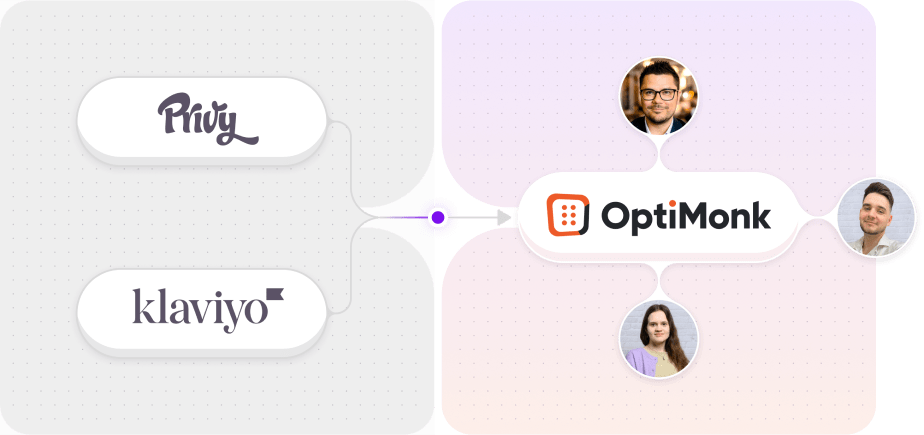
What should you do next?
Thanks for reading till the end. Here are 4 ways we can help you grow your business:
Boost conversions with proven use cases
Explore our Use Case Library, filled with actionable personalization examples and step-by-step guides to unlock your website's full potential. Check out Use Case Library
Create a free OptiMonk account
Create a free OptiMonk account and easily get started with popups and conversion rate optimization. Get OptiMonk free
Get advice from a CRO expert
Schedule a personalized discovery call with one of our experts to explore how OptiMonk can help you grow your business. Book a demo
Join our weekly newsletter
Real CRO insights & marketing tips. No fluff. Straight to your inbox. Subscribe now
Barbara Bartucz
- Posted in
- Ecommerce
Partner with us
- © OptiMonk. All rights reserved!
- Terms of Use
- Privacy Policy
- Cookie Policy
Product updates: January Release 2025
